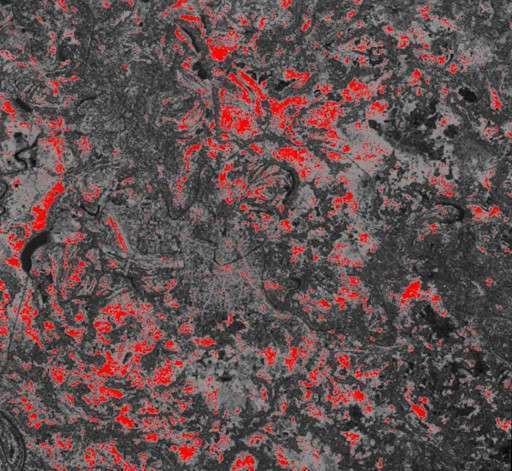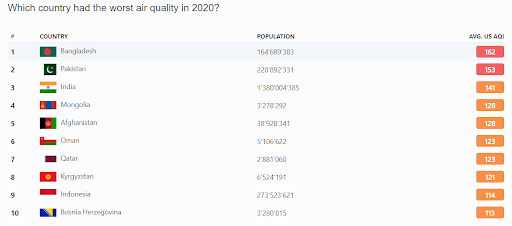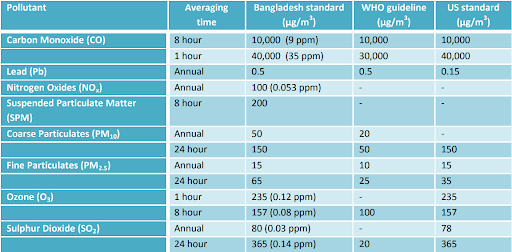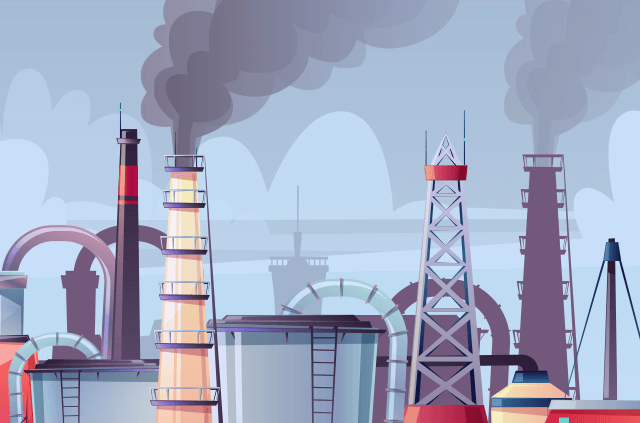The air quality of Dhaka can’t be saved unless the government strengthens the regulatory framework to reduce the pollution from brick kilns. More than 90% of brick kilns in Bangladesh are Fixed Chimney Kilns (FCKs). Despite their high pollution features, they are prevalent due to low investment cost and having the ability to operate on lowlands.
It is a matter of concern that more than 20% of premature mortality occurs due to pollution caused by Fixed Chimney Kilns. Bangladesh should look for alternatives to reduce brick kiln pollution. It even gets worse as more brickfields are introduced without proper authorization from the Department of Environment (DoE) in Bangladesh.
Three Major FootSteps to Reduce Brick Kiln Pollution
Although India has retained the last position, Bangladesh is no less. It is a matter of shame that Bangladesh is positioned at 131 places among 132 countries in terms of air pollution control.
According to a newspaper report,
-The government of Bangladesh has stipulated laws for not building brick plants near residential areas or forests within a 3-kilometer range.
Detect The Most Polluted Brick Kilns
If the country has a satellite, it is easy to detect the brick kilns that are causing the highest pollution. For example, this was taken by a team from Stanford University (School of Earth, Energy & Environmental Sciences) in India –
Polluted Brick Kilns Taken From the Sentinel 1 Satellite

Now, Bangladesh has launched its satellite, called the “Bangabandhu Satellite-1”. Although the satellite is capable of geological communication and transmission, we are not sure if it can take such pictures.
Whether or not a country has a suitable satellite or not, there is always to count the brick kilns that are responsible for serious pollution. The government should take the necessary steps to count as many backdated brick kilns as possible. It is the first and foremost task for reducing the overall pollution created by brick mills.
Serious Health Risk
The pollution from brick kilns may look tiny in the pictures taken by satellites, they are large threats on ground-level. You will be surprised to know – that more than 48,000 kilograms of carbon monoxide (CO) are emitted in one season. And a catastrophe for global warming will occur in no time if you multiply the number by 8000 or more kilns.
According to IQAir, here is a list of countries that have the worst air quality in Bangladesh. Sadly, Bangladesh is in the top position.

Researchers have found that the level of dangerous particulates in Bangladesh that are airborne is 90 times greater than the recommended level declared by the World Health Organization (WHO). As a result, thousands of people will suffer from cardiovascular and respiratory diseases living near the kilns.
Here is a comparison of the air quality of Bangladesh with US and WHO standards –

The government of Bangladesh has already applied limitations and restrictions to the brick kilns that are not obeying the health and safety standards. They are planning on shutting down such brick kilns soon if the owners continue to act the same. The acting head of World Bank Bangladesh, Zahid Hussain declared –
“The Government has taken commendable steps such as to ban traditional high polluting kilns by next two years. The World Bank is supporting the Government of Bangladesh’s efforts to move to cleaner and energy-efficient brick-making technologies.”
Promote New Types of Bricks
In north Dhaka, 530 FCKs are producing 2.1 billion bricks annually. Although it is the main source of brick production in the city, it is polluting the environment more than ever. Aside from the traditional Fixed Chimney Kilns, Bangladesh should look for alternative ways to manufacture bricks. Ways that can protect nature by reducing pollution even for a bit. According to a report from the Energy-efficient Clean Technologies in the Brick Sector of Bangladesh.
-Vertical Shaft Brick Kilns (VSBKs) and Hybrid Hoffman Kilns (HHKs) are more socially profitable than the predominant Fixed Chimney Kilns.
Yes, these types of brick kilns are less polluting than the usual kilns with fixed chimneys. A net profit of 68 to 75 TK per thousand bricks can be obtained from the socially profitable technologies of such brick kilns. On the other hand, FCKs are not socially and environmentally friendly due to high pollution for emitting CO2, CO, and other toxic gases.
A joint venture of the World Bank and the Clean Air and Sustainable Environment Project under DoE reported that – premature mortality due to brick pollution can be reduced to 60% by replacing traditional brick kilns with VSBKs. It turns into 45% if the same can be done with HHKs.
Incentives for Change
The incentive is an absolute factor that needs to be inserted into people’s minds to change the perception of relying on brick manufacturing that highly pollutes the environment. Effective approaches are required to change the behavior of the country where the rule of law is limited.
On top of that, we need to change the interests of the major stakeholder groups in Bangladesh to deviate from the conventional path. According to a graduate student in the International Policy Study program, it is hard to change policies in an environment that is run by weak governance. Corrupt regulations are imperfectly inserted. Therefore, a better incentive structure is needed to change the behavior.
The good news is, that international associations and NGOs are interviewing various community and environmental organizations to provide solid case studies to make changes in the thinking of the stakeholders. The Greentech Knowledge Solutions in Delhi is a very good example of improving brick kiln efficiency.
Final Thoughts
Although the brick-making sector may contribute a lot to the country’s gross domestic product and create millions of employment opportunities, it needs to work in an environmentally safe manner. This article not only gives you hints on reducing the pollution from brick mills but also makes you aware of the dangerous impact it has on the society and environment. And it will act as a report to the government of Bangladesh so that they can become concerned about the seriousness of this matter.


